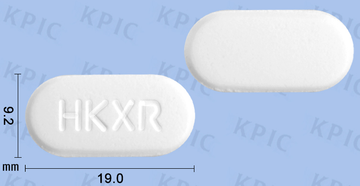
Atopic dermatitis, also known as eczema, is a common skin condition that affects millions of people worldwide. It is characterized by red, itchy, and inflamed skin that can be both uncomfortable and unsightly. While there is currently no cure for atopic dermatitis, there are treatment options available to help manage symptoms and improve the overall health of the skin. One such treatment is atopic dermatitis cream, which can be a powerful tool in unlocking clearer and healthier skin.
Atopic dermatitis creams are designed to help soothe the skin, reduce inflammation, and provide much-needed hydration. They typically contain ingredients like ceramides, which help repair the skin barrier, as well as anti-inflammatory ingredients like colloidal oatmeal or hydrocortisone to help reduce redness and itching. By using an atopic dermatitis cream regularly, you can help restore the skin's natural balance and prevent flare-ups from occurring.
When choosing an atopic dermatitis cream, it's important to look for products that are specifically formulated for eczema-prone skin. These creams are usually fragrance-free, dye-free, and hypoallergenic, making them less likely to irritate sensitive skin. It's also a good idea to opt for creams that are thick and rich in texture, as these will provide better hydration and protection for the skin.
Using an atopic dermatitis cream is a simple process that can have a big impact on the health of your skin. To apply the cream, start by cleansing the skin with a gentle, non-irritating cleanser. Pat the skin dry and then apply a generous amount of the cream to the affected areas. Gently massage the cream into the skin until it is fully absorbed. You can use the cream as often as needed, but it's generally recommended to apply it at least twice a day, especially after bathing or showering.
In addition to using an atopic dermatitis cream, there are other steps you can take to help manage your eczema and promote clearer, healthier skin. One important aspect of eczema management is to avoid triggers that can exacerbate symptoms, such as harsh soaps, hot water, and certain fabrics like wool. It's also important to moisturize regularly to help keep the skin hydrated and to avoid scratching, as this can further irritate the skin and lead to infection.
Another key component of managing atopic dermatitis is to pay attention to your diet and lifestyle. Certain foods, such as dairy, gluten, and nuts, can trigger eczema flare-ups in some individuals, so it may be helpful to keep a food diary to identify any potential triggers. Stress can also play a role in exacerbating eczema symptoms, so finding healthy ways to cope with stress, such as exercise, meditation, or therapy, can be beneficial for both your skin and your overall well-being.
In some cases, over-the-counter atopic dermatitis creams may not provide enough relief, and a prescription-strength cream may be necessary. If you find that your symptoms are not improving with over-the-counter treatments, it's important to consult with a dermatologist who can recommend a more targeted treatment plan. Prescription-strength creams may contain higher concentrations of active ingredients or other medications to help manage severe eczema symptoms.
Overall, atopic dermatitis creams can be a valuable tool in managing eczema symptoms and promoting clearer, healthier skin. By choosing a cream that is specifically formulated for eczema-prone skin and incorporating it into a regular skincare routine, you can help soothe inflammation, reduce itching, and restore the skin's natural balance. Remember to also pay attention to your diet, lifestyle, and triggers that can exacerbate eczema symptoms, and consult with a dermatologist if you need additional support in managing your condition. With the right approach and the power of atopic dermatitis cream, you can achieve clearer, healthier skin and improve your quality of life.
